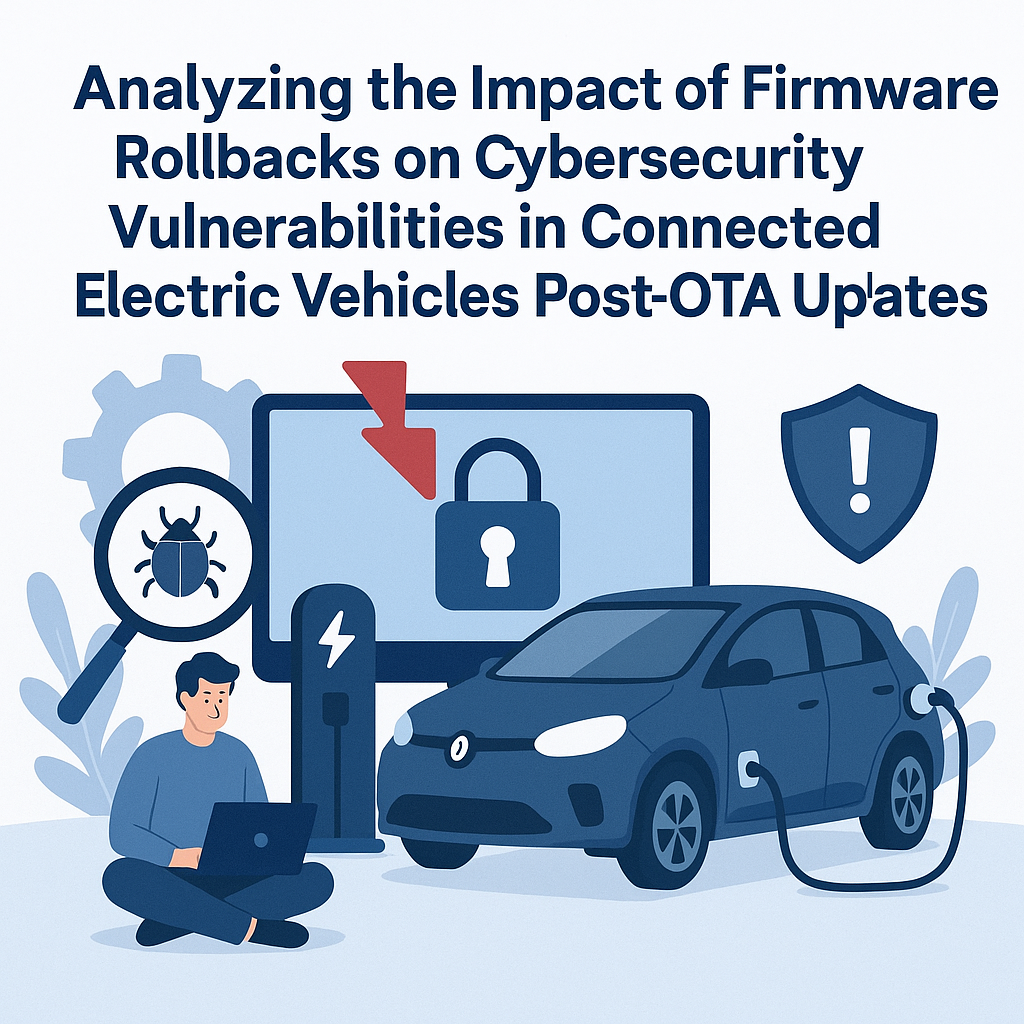Introduction
The rapid evolution of connected electric vehicles (EVs) has brought significant advancements in technology and convenience. However, with these advancements come new vulnerabilities, particularly following over-the-air (OTA) updates. This blog post aims to analyze the impact of firmware rollbacks on cybersecurity vulnerabilities in connected electric vehicles after OTA updates, highlighting the potential risks and best practices for manufacturers and consumers alike.
Understanding OTA Updates in Connected Electric Vehicles
OTA updates allow manufacturers to remotely update the software and firmware of connected electric vehicles, ensuring that vehicles operate with the latest features and security patches. While these updates enhance functionality and security, they can also introduce new vulnerabilities.
- Benefits of OTA Updates:
- Improved security features and bug fixes.
- Enhanced vehicle performance and functionality.
- Reduced need for physical dealership visits.
- Potential Risks:
- Introduction of new vulnerabilities during the update process.
- Possibility of failed updates leading to compromised systems.
- Increased attack surface for cybercriminals.
What are Firmware Rollbacks?
Firmware rollbacks refer to the process of reverting to a previous version of software or firmware after an update has been applied. This can be a critical mechanism for manufacturers to mitigate issues introduced by a faulty update. However, rollbacks can also present unique cybersecurity challenges.
Reasons for Firmware Rollbacks
- Buggy OTA Updates: If an OTA update introduces critical bugs or performance issues.
- Security Vulnerabilities: If a new update exposes the vehicle to new security threats.
- User Preference: Some users may prefer features that were available in previous firmware versions.
Analyzing the Cybersecurity Implications of Firmware Rollbacks
While firmware rollbacks can be a necessary tool for maintaining vehicle performance and security, they also come with cybersecurity implications that need to be addressed. Below are some of the key considerations:
1. Reintroducing Known Vulnerabilities
One of the primary risks associated with firmware rollbacks is the potential to reintroduce known vulnerabilities that had previously been patched. This can occur if the older firmware version contains security flaws that were addressed in the newer update.
2. Exploitation by Cybercriminals
Cybercriminals may exploit firmware rollbacks by targeting vehicles running outdated software. These individuals can take advantage of known vulnerabilities that have been documented in older firmware versions, leading to potential breaches of sensitive data.
3. Complexity of Verification
Verifying the integrity and security of rolled-back firmware can be complex. Manufacturers must ensure that the rollback process itself does not introduce new vulnerabilities or allow for unauthorized access. This requires robust security measures and testing protocols.
Best Practices for Managing Firmware Rollbacks
To mitigate the risks associated with firmware rollbacks while maintaining the benefits of OTA updates, manufacturers and consumers should adopt the following best practices:
- Implement Secure Update Mechanisms: Ensure that the OTA update process includes strong encryption and authentication methods to prevent tampering.
- Conduct Thorough Testing: Before rolling out updates, conduct extensive testing to identify potential vulnerabilities and issues.
- Monitor for Vulnerabilities: Continuously monitor for newly discovered vulnerabilities in both current and rolled-back firmware versions.
- Educate Users: Inform users about the importance of keeping their vehicles updated and the risks associated with firmware rollbacks.
Conclusion
As connected electric vehicles continue to evolve, understanding the impact of firmware rollbacks on cybersecurity vulnerabilities is essential. While OTA updates provide numerous benefits, manufacturers must remain vigilant in managing the associated risks. By implementing best practices and ensuring robust security protocols, both manufacturers and consumers can help protect against potential cyber threats, ensuring a safer and more secure driving experience.



